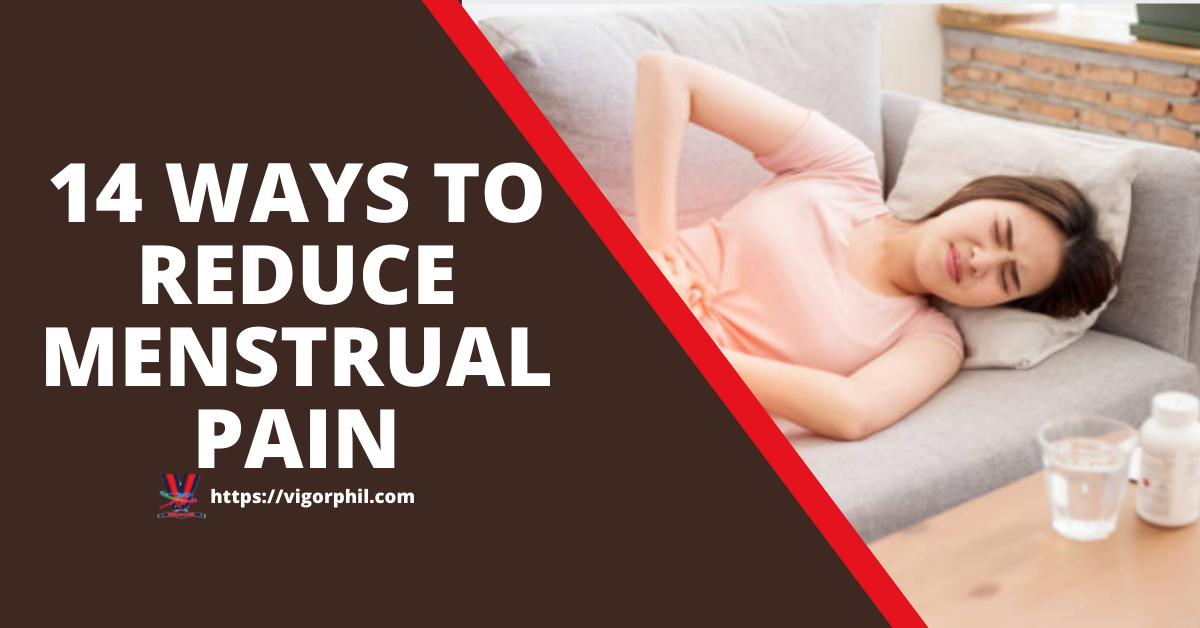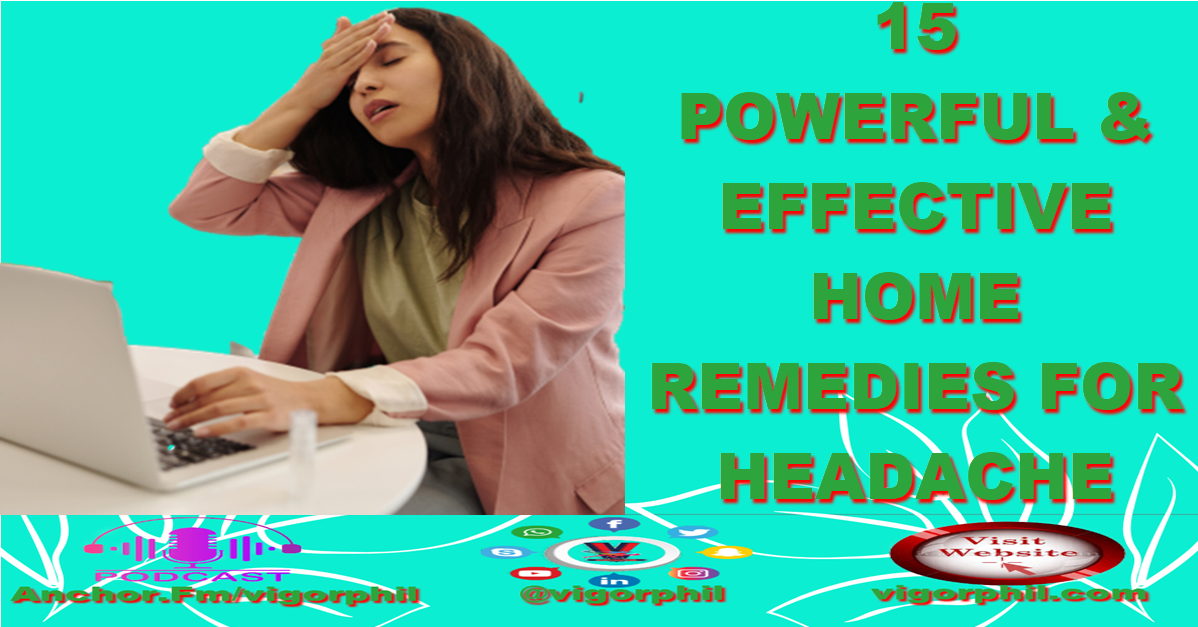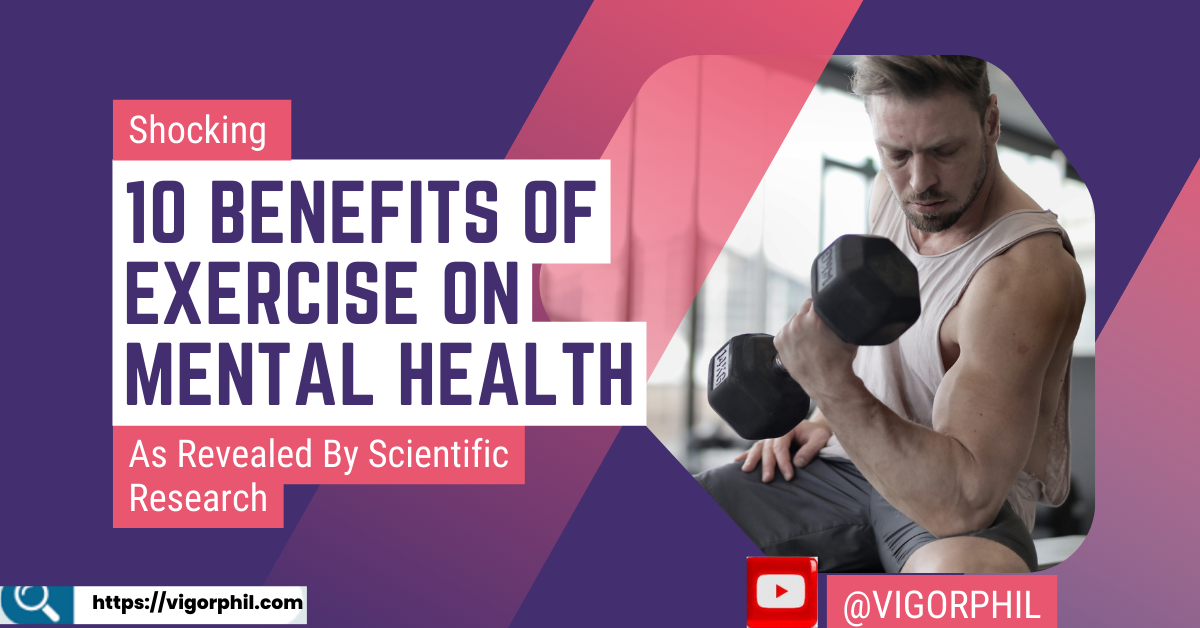Menstrual pain, also known as dysmenorrhea, is a common problem experienced by many women during their menstrual cycle. The pain can range from mild to severe and can include cramps, backache, and headaches.
There are several ways to reduce menstrual pain, including over-the-counter pain medication, heat therapy, and lifestyle changes. In this introduction, we will discuss some effective methods for reducing menstrual pain, so you can have a more comfortable menstrual cycle. In this article, we will be considering the various ways on how to reduce menstrual pain
1. use guava leaves
To use guava leaves for menstrual pain reduction, get 15 leaves of guava from a guava tree, then wash the leaves thoroughly, pour a liter of water into a cooking pot, add the guava leaves you just plugged and washed into the cooking pot, after which you should boil for 15 mins, allow to cool down and drink a cup of the boiled guava leaves two (2) times daily.
2. Exercise regularly
Regular exercise can be an effective remedy for menstrual pain. Studies have shown that physical activity can reduce the intensity and duration of menstrual cramps, as well as improve overall menstrual symptoms. This is thought to be due to the release of endorphins, which are natural pain-relieving chemicals, during exercise.
Additionally, regular exercise can help to improve overall physical and mental health, which can also contribute to a reduction in menstrual pain. It is recommended to do moderate exercise such as brisk walking, swimming, and cycling during the menstrual cycle.
3. Try heat therapy
Heat therapy, such as using a heating pad or hot water bottle, can be an effective remedy for menstrual cramps. The heat can help to relax the muscles in the abdomen, which can reduce pain and discomfort. To use heat therapy, simply apply a heating pad or hot water bottle to the lower abdomen or back. It is important to use a moderate level of heat and avoid overheating. Also, it’s not recommended to use heat therapy for longer than 20 minutes at a time. It’s always important to check with a doctor if you have any concerns regarding the use of heat therapy.
4. Maintaining a healthy diet
Maintaining a healthy diet can be an effective remedy for menstrual pain. Eating a balanced diet that includes plenty of fruits, vegetables, whole grains, and lean proteins can help to reduce inflammation and provide the nutrients necessary for the body to function properly. It is also important to stay hydrated by drinking plenty of water and avoiding foods that are high in saturated fats, sugar, and processed foods.
There are also certain foods that may help alleviate menstrual cramps. These include:
- foods high in omega-3 fatty acids, such as fatty fish, flaxseed, and chia seeds
- foods high in magnesium, such as leafy greens, nuts, and seeds
- foods high in vitamin E, such as nuts and seeds
- foods high in vitamin B1, such as lean meats, fish, and whole grains
It’s important to note that everyone’s body is different, and some people may find that certain foods exacerbate their symptoms while others may find relief. It may be beneficial to keep a food diary to track which foods are helpful and which are not. It’s always a good idea to consult with a doctor or dietitian if you have any concerns or questions about your diet.
5. Try Relaxation techniques
Relaxation techniques can be an effective remedy for menstrual pain. The physical and emotional stress that can accompany menstrual cramps can exacerbate the symptoms, and relaxation techniques can help to reduce this stress and relax the muscles in the abdomen, which can reduce pain and discomfort.
Some relaxation techniques that may help alleviate menstrual cramps include:
- deep breathing exercises
- progressive muscle relaxation
- other forms of exercise
- aromatherapy
- Etc
It’s important to find the relaxation technique that works best for you and to practice it regularly. It may take some experimentation to find what works best for you and it’s always a good idea to speak with a healthcare professional before starting any new practice.
It’s also important to note that relaxation techniques can be used in conjunction with other remedies such as heat therapy, over the counter pain medication and maintaining a healthy diet.
6. Sleep Adequately
Getting enough sleep and rest can be an effective remedy for menstrual pain. The body needs adequate rest to function properly and to help reduce inflammation and pain. During menstruation, the body is going through a lot of changes, and getting enough sleep can help to balance hormones and reduce cramps.
Tips for getting enough sleep and rest during menstruation include:
- Establishing a regular sleep schedule
- Creating a comfortable sleeping environment
- Avoiding caffeine, nicotine, and alcohol before bed
- Avoiding screens and bright lights before bed
- Relaxation techniques such as deep breathing, yoga, or meditation
- Staying active during the day to help reduce fatigue
- Avoiding heavy meals, spicy foods and sugary foods before bedtime
It’s important to note that everyone’s sleep needs are different and it’s always a good idea to speak with a healthcare professional if you have any concerns or questions about your sleep.
In addition, it’s important to note that getting enough sleep and rest should be combined with other remedies such as heat therapy, over the counter pain medication, maintaining a healthy diet and practicing relaxation techniques for optimal results.
7. Try hormonal birth control method
Using a hormonal birth control method can be an effective remedy for menstrual pain. Hormonal birth control methods work by regulating the hormones that cause menstruation, which can help to reduce the severity of menstrual cramps.
Hormonal birth control methods that may help to alleviate menstrual cramps include:
- Oral contraceptives (birth control pills)
- Hormonal intrauterine devices (IUDs)
- Hormonal patches
- Hormonal injections
- Vaginal ring
Oral contraceptives, for example, can help to regulate the hormones that cause menstruation, which can reduce the severity of menstrual cramps. Hormonal IUDs and other methods also have the same effect and can provide long-term relief.
It’s important to note that hormonal birth control methods have potential side effects and it’s always a good idea to speak with a healthcare professional to determine which method is best for you and to discuss any potential risks or side effects.
It’s important to note that hormonal birth control methods should not be used as the only remedy for menstrual pain and it’s always a good idea to combine them with other remedies such as heat therapy, over-the-counter pain medication, maintaining a healthy diet, and practicing relaxation techniques for optimal results.
8. Using a menstrual cup or tampons
Using a menstrual cup or tampons instead of pads can potentially reduce cramping during menstruation as a remedy for menstrual pain. Menstrual cups and tampons are both inserted into the vagina and collect menstrual blood, which can help reduce the feeling of bloating and pressure that can cause cramping.
Additionally, tampons can help reduce cramping by applying pressure on the cervix, which can help reduce the flow of menstrual blood and ease discomfort. It is important to note that menstrual cups and tampons may not work for everyone and it is important to consult with a healthcare professional before making any changes to your menstrual hygiene routine.
9. Avoiding caffeine, alcohol, and smoking
Avoiding caffeine, alcohol, and smoking can be an effective remedy for menstrual pain. Caffeine and alcohol are both stimulants that can increase muscle contractions and inflammation, which can worsen menstrual cramps. Smoking can also increase inflammation and restrict blood flow to the uterus, which can also worsen menstrual cramps. Additionally, smoking can also increase the risk of other health problems, such as cancer and heart disease.
It’s important to note that consuming these substances in moderation should not cause any significant harm but if you are experiencing menstrual cramps, it is best to avoid them during that time.
It is also important to consult with a healthcare professional before making any changes to your diet or lifestyle. They may be able to provide additional recommendations or suggest other remedies for menstrual pain.
10. Using essential oils
Using essential oils, such as lavender or clary sage, can be an effective remedy for menstrual cramps. Essential oils are highly concentrated plant extracts that can be used for aromatherapy, massage, and topical application.
Lavender essential oil is known for its relaxing properties and can be used to reduce stress and tension, which can worsen menstrual cramps. It can be diffused in the air or added to a warm bath.
Clary sage essential oil is used to regulate hormones and relieve menstrual cramps. It can be used in a massage oil or added to a warm bath as well.
It is important to note that essential oils should be used with caution and never ingested. They should be diluted before use and it is always recommended to consult with a healthcare professional before using essential oils, especially if you are pregnant or have a medical condition.
It is also important to note that essential oils may not work for everyone and it is always recommended to consult with a healthcare professional before making any changes to your menstrual hygiene routine.
11. Taking a warm bath with Epsom salts
Taking a warm bath with Epsom salts can be an effective remedy for menstrual cramps. Epsom salts contain magnesium which is a mineral that helps to relax muscles and can reduce cramping. The warm water of the bath can also help to relax the muscles and reduce cramping by increasing blood flow to the area.
To use this remedy, add 2 cups of Epsom salts to a warm bath and soak for at least 20 minutes. It is recommended to do this 2-3 times a week during your menstrual cycle.
It is important to note that Epsom salt baths can cause dryness of the skin, so it is important to moisturize your skin after taking a bath with Epsom salts. It is also important to consult with a healthcare professional before making any changes to your menstrual hygiene routine.
12. Taking time to rest and relax
Taking time to rest and relax during your period can be an effective remedy for menstrual pain. Stress and tension can worsen menstrual cramps and other symptoms, so it is important to take time to relax and reduce stress during your period.
There are different ways to relax and reduce stress during your period. Some examples include:
- deep breathing exercises
- Gentle stretching
- Listening to calming music
- Reading a book
- Taking a warm bath
- Getting a massage
It’s important to find what works best for you and make time for relaxation during your period. It’s also important to avoid activities that can add to stress or tension, such as intense physical exercise or work overload.
It’s also important to listen to your body, if you need to take it easy and rest more, do so. Taking time to rest and relax can also help improve sleep, which can also aid in reducing menstrual pain.
It is also important to consult with a healthcare professional before making any changes to your menstrual hygiene routine.
13. Try natural remedies
Ginger and turmeric are natural remedies that have been shown to have anti-inflammatory properties and may be useful in reducing menstrual pain. Studies have found that ginger supplements can help to reduce menstrual cramps and pain, while turmeric has been shown to have anti-inflammatory effects on the body. Both ginger and turmeric can be consumed in supplement form or added to food as a spice. It is important to talk to a healthcare professional before taking any new supplements, especially if you are pregnant or have a medical condition.
14. Consulting with your healthcare provider
Consulting with your healthcare provider can be an important step in finding a remedy for menstrual pain. Menstrual cramps and other symptoms can be caused by a variety of underlying medical conditions, such as endometriosis, fibroids, or polyps. These conditions can cause chronic or severe menstrual pain and may require treatment.
It’s important to consult with your healthcare provider if you have: -Severe or worsening cramps -Pain or cramps that interfere with your daily activities -Pain or cramps that are not relieved by over-the-counter medications -Heavy or irregular periods -Pain during intercourse or bowel movements
Your healthcare provider can perform a physical examination, order tests or imaging, and make a diagnosis. They may also recommend treatment options, such as medication or surgery.
It’s also important to keep track of your menstrual cycles and symptoms, and inform your healthcare provider of any changes. This information can help them to make a diagnosis and recommend the best treatment options.
It is important to note that if you are experiencing menstrual cramps and other symptoms that are not relieved by over-the-counter medication or other remedies, it is important to consult with a healthcare professional to rule out any underlying medical conditions.
Conclusion
In conclusion, there are a variety of ways to reduce menstrual pain, including taking over-the-counter pain medication, using heat therapy, practicing relaxation techniques, and making lifestyle changes such as eating a healthy diet and exercising regularly. Additionally, it is important to discuss any persistent pain with a healthcare provider, as they may be able to provide additional treatment options such as birth control pills or nonsteroidal anti-inflammatory drugs (NSAIDs). Ultimately, the best approach will vary depending on the individual and it is important to find what works best for you.
Frequently Asked Question On Menstruation
Why is my period so painful?
There are several possible reasons why a person’s period may be painful. One common cause is dysmenorrhea, which is characterized by cramping in the lower abdomen and lower back. This pain is caused by the contraction of the uterus as it sheds its lining. Hormonal imbalances, such as an excess of prostaglandins, can also lead to painful periods.
Other possible causes of painful periods include endometriosis, fibroids, and pelvic inflammatory disease (PID). Endometriosis is a condition in which the tissue that lines the uterus grows outside of it. Fibroids are noncancerous growths that develop in the uterus. PID is an infection of the reproductive organs that can cause pain and inflammation.
It’s important to note that menstrual pain can also be caused by a combination of factors, and it’s essential to consult a doctor to understand the underlying cause of the pain and to receive the appropriate treatment.
A healthcare provider may also perform a physical examination, and may also order for an ultrasound, MRI or pelvic examination to help determine the cause of the pain and provide the appropriate treatment.
Is period pain similar to Labour pain?
No, Period pain and labor pain are different types of pain, although they may share some similarities. Period pain, also known as dysmenorrhea, is a cramping pain that occurs in the lower abdomen during menstruation. This pain is caused by the contraction of the uterus as it sheds its lining. Labor pain, on the other hand, is caused by the contraction of the uterus as the baby is being born. Labor pain is typically more intense and is felt in the lower back, pelvic area, and thighs. Additionally, period pain is usually a short-term pain, lasting only a few days, while labor pain can last for several hours or even days.
Do periods get worse with age?
Periods can change as a person ages, but it’s not necessarily the case that they will get worse. As a woman approaches menopause, her periods may become less frequent and lighter. However, this process can take several years, and some women may continue to have regular, heavy periods until menopause.
Additionally, some women may experience an increase in menstrual pain as they age due to conditions such as endometriosis or fibroids, which can develop over time.
In general, it’s important to pay attention to any changes in your menstrual cycle and to discuss them with your healthcare provider. They can help determine if any underlying issues are causing the changes and provide appropriate treatment.
It’s also worth noting that some women may experience menstrual irregularities as they age, such as heavy or light periods, longer or shorter cycles, or irregular cycles. These variations can happen due to hormonal changes and other factors, but it’s best to see a healthcare provider if any changes persist.
What age do periods end?
The age at which periods (menstruation) end is called menopause. On average, menopause occurs around age 51, but it can occur earlier or later. Some women may experience menopause as early as their late 30s or as late as their early 60s. Factors such as genetics and overall health can affect when a woman will experience menopause.
How much blood do you lose during your period?
The amount of blood loss during a menstrual period can vary greatly from person to person. On average, it is estimated that a person loses about 30 to 40 milliliters (mL) of blood during their period. This is about 2 to 3 tablespoons. However, some people may lose less or more. It is considered heavy menstrual bleeding (also called menorrhagia) if a person loses more than 80 mL of blood per period. If you are concerned about the amount of blood you are losing during your period, it is important to speak with your healthcare provider.
How long do period cramps last?
Period cramps, also known as dysmenorrhea, can last for several days, typically the first 2-3 days of a woman’s menstrual cycle. However, the duration and intensity of cramps can vary from person to person. Some women may experience mild cramps that last a day or two, while others may have more severe cramps that last the entire duration of their period.
What do huge blood clots in period mean?
Huge blood clots in your period can be a sign of a condition called menorrhagia, which is characterized by heavy or prolonged menstrual bleeding. Other symptoms of menorrhagia may include anemia (low iron levels), fatigue, and cramping. Menorrhagia can be caused by a variety of factors, including hormonal imbalances, fibroids, polyps, and certain medications. If you experience large blood clots or any other unusual symptoms during your period, it is important to speak with your healthcare provider to determine the cause and appropriate treatment.
What is the best position to sleep on your period?
There is no one “best” position to sleep on your period, as everyone’s comfort preferences and menstrual symptoms may vary. However, some positions that may be more comfortable for some people include sleeping on your side with a pillow between your legs, or sleeping in a fetal position. Additionally, using a heating pad or hot water bottle on your lower abdomen may help alleviate menstrual cramps. It’s important to find a position that is comfortable for you and allows you to get a good night’s sleep.
Do you bleed more at night on your period?
There is no scientific evidence to suggest that you bleed more at night during your period. However, some people may experience increased menstrual cramps or bloating at night, which may make it more difficult to sleep. Additionally, lying down for long periods of time can cause menstrual blood to pool in the cervix and vagina, which may make it seem like you are bleeding more. But this is not actually increase in the amount of menstrual blood.
It’s also worth noting that menstrual bleeding can vary greatly from person to person, and can be affected by factors such as hormonal imbalances, certain medications, or underlying health conditions. If you are concerned about heavy menstrual bleeding or experience other symptoms such as fatigue, anemia, or frequent infections, it’s important to speak with your healthcare provider.











